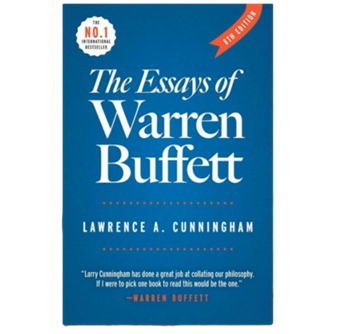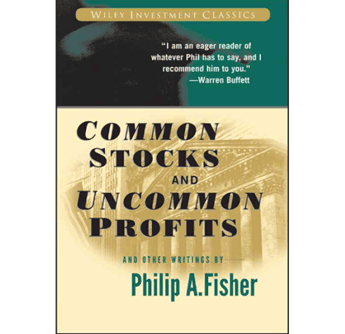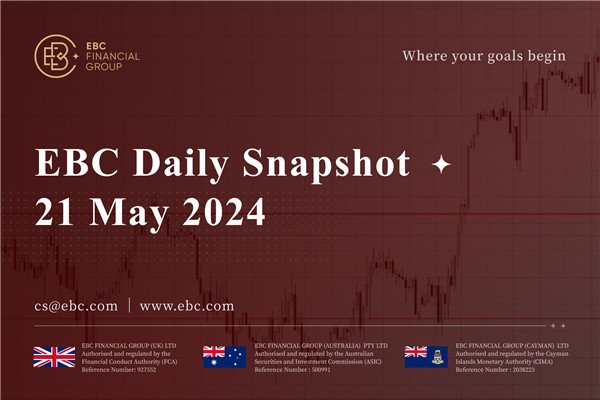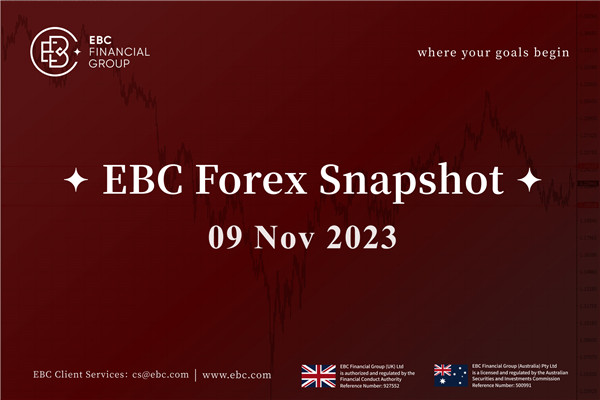
Philip Fisher's approach to selecting outstanding companies centres on identifying exceptional businesses with strong growth potential, capable management, and durable competitive advantages.
By combining careful qualitative research with a long-term perspective, he showed that investing success depends as much on understanding a company's character as on its financial metrics.
This article will break down Fisher's life, core investment philosophy, his famous 15-point checklist, the scuttlebutt method, practical lessons for investors, and his enduring influence on modern growth investing.
What makes Fisher important
Philip Fisher extended fundamental analysis beyond balance sheets and ratios, formalising fieldwork and qualitative enquiry in stock selection. His ideas complement, rather than replace, classical value investing.
Philip Fisher's Early life and career

Background highlights (concise)
Born 8 September 1907 in San Francisco; studied economics at Stanford. He began his career as a securities analyst and founded Fisher & Company in 1931. managing money for private clients over many decades.
Notable early investments and reputation
Fisher made early investments in technology and manufacturing firms (for example, long holdings in companies that evolved into industry leaders). He became better known after publishing Common Stocks and Uncommon Profits (first edition 1958), a book that established his reputation nationwide.
Core Principles of Philip Fisher's Investment Approach

Philip Fisher's philosophy can be summarised in a few clear principles. Each point below is followed by a short practical implication.
1) Qualitative analysis is indispensable
Fisher argued that numbers alone do not reveal a company's future prospects; invest time in learning about management quality, competitive advantages and product potential.
Practical implication: speak to customers, suppliers and former employees; read trade journals; visit production sites where possible.
2) Long-term, buy-and-hold orientation
He believed in buying great companies and holding them for long periods so that compound returns could materialise. Fisher famously recommended that the best time to sell was "almost never."
3) Concentration on exceptional companies
Rather than owning many average firms, Fisher preferred a portfolio concentrated in a few high-quality businesses in which the investor has deep conviction.
Practical implication: commit to thorough due diligence before large positions.
4) Management matters — integrity and capability
The character and competence of senior management is a major investment variable for Fisher. He sought transparent, shareholder-oriented leaders.
Fisher's 15-point checklist
The 15-point checklist is central to Fisher's method. It is intended as an investment diagnostic that emphasises long-term potential and qualitative strengths. The table below summarises each point in concise form.
| No. |
Checklist point |
| 1 |
Products/services with strong long-term growth potential. |
| 2 |
Management's attitude toward continuing product/service development. |
| 3 |
Research and development effectiveness. |
| 4 |
Strength of the sales organisation. |
| 5 |
Profit margins and how they compare with competitors. |
| 6 |
Ability/track record of maintaining or improving margins. |
| 7 |
Labour and personnel relations. |
| 8 |
Executive relations (quality of top management). |
| 9 |
Depth of management — successors and bench strength. |
| 10 |
Control of costs and accounting clarity. |
| 11 |
Industry peculiarities that give advantage or risk. |
| 12 |
Long-range prospects for sales and earnings growth. |
| 13 |
Need for additional finance and potential shareholder dilution. |
| 14 |
Management's honesty in both good times and bad. |
| 15 |
Integrity of management and trusteeship toward shareholders. |
How to use the checklist
Use it as a qualitative filter rather than a mechanical scorecard.
For each point, aim for corroborating evidence from at least two independent sources (e.g. competitor interviews, trade journals, financial filings).
Assign weight to items that matter most for that specific industry (for example, R&D in pharmaceuticals).
The scuttlebutt method — Philip Fisher's qualitative research technique

1) Definition and origin
"Scuttlebutt" refers to gathering firsthand qualitative intelligence — speaking with customers, suppliers, distributors, ex-employees and competitors to form a rounded view of a company beyond its financial statements. Fisher made this approach systematic.
2) Typical scuttlebutt steps (serialised)
Define the key questions you need answered (product durability, customer satisfaction, pricing power).
Identify who knows — customers, suppliers, trade associations, ex-staff.
Conduct structured enquiries (same questions, cross-check responses).
Triangulate the evidence to confirm or refute hypotheses.
Reconcile any qualitative findings with the financials and valuations.
3) Modern adaptations
Today, scuttlebutt includes online equivalents: employee reviews, customer forums, social media sentiment and regulatory filings. But Fisher's central idea — that direct, field-level intelligence complements metrics — remains intact.
Key investing lessons & practical rules from Fisher

Below are compact lessons derived from Fisher's work, with brief commentary.
Focus on exceptional businesses, not temporary bargains.
Be willing to hold winners for long periods; avoid frequent trading.
Accept small mistakes; let winners compound.
Prioritise management quality and strategic foresight.
Use qualitative research to identify durable competitive advantages.
Practical checklist before a purchase
Does the company have a franchise or advantage likely to last a decade?
Is management candid and focused on growth, not just short-term earnings?
Does current price leave room for long-term compounding?
Fisher compared with Benjamin Graham: Growth vs Value

| Aspect |
Philip Fisher |
Benjamin Graham |
| Primary focus |
Qualitative growth and management; long-term compounding |
Quantitative margin-of-safety; net-asset/value metrics |
| Portfolio style |
Concentrated in high-conviction names |
Diversified to reduce risk from estimation error |
| Time horizon |
Very long (allowing businesses to develop) |
Medium to long, often opportunistic value buys |
| Typical tools |
Scuttlebutt, qualitative checklists |
Financial ratios, intrinsic value calculations |
This is not a contest; modern investors often combine both approaches — Graham's discipline with Fisher's qualitative insights.
Fisher's Influence on Modern Investors and Growth Investing

1) Influence on later investors
Warren Buffett has cited Fisher as a significant influence on his thinking about management and business quality; Buffett described his own approach as roughly "85% Graham and 15% Fisher." Fisher's scuttlebutt technique is still discussed in leading investment circles.
2) Enduring relevance
Fisher's emphasis on R&D, sales capability and management transparency is especially relevant to technology, healthcare and other innovation-driven sectors. His rules remain a practical complement to quantitative screening.
3) How an investor might apply Fisher today
Choose a candidate company (tech or healthcare where R&D matters).
Apply the 15-point checklist: identify strengths and risks.
Conduct scuttlebutt: speak with suppliers, read product reviews, examine patent filings and regulatory correspondence.
Assess valuation: even a great company requires a sensible price.
Decide position size: for Fisher-style conviction holdings, ensure the position is large enough to matter but diversified to avoid single-name catastrophic risk.
Monitor: set rules for monitoring management actions and sector developments; sell only if the company's prospects or integrity change materially.
Conclusion
Philip Fisher's contribution to investing is practical and enduring: invest in great businesses, know them intimately, trust management only when proven, and give time for compounding.
His methods are particularly valuable for investors prepared to do the qualitative homework that many others neglect. When paired with robust valuation discipline, Fisher's approach remains a powerful way to find long-term winners.
Frequently Asked Questions
Q1: Is Fisher's method suitable for retail investors?
Yes. While institutional investors may have more resources for fieldwork, retail investors can adapt scuttlebutt by using customer reviews, trade publications and direct outreach where feasible.
Q2: Does Fisher recommend ignoring valuations?
No. Fisher emphasised buying great companies but also acknowledged that price matters — the balance of quality and price determines long-term returns.
Q3: How many stocks should a Fisher-style investor hold?
Fisher favoured concentration in the best ideas; however, the exact number depends on the investor's capacity for research and risk tolerance. Many practitioners adopt a concentrated core (10–20 names) while keeping smaller satellite positions.
Q4: Is the scuttlebutt method legal and ethical?
Yes — so long as information is gathered lawfully and without insider trading. Fisher's approach involves public-facing enquiries and conversations, not confidential corporate secrets. Always observe market-abuse laws in your jurisdiction.
Q5: How does Fisher's approach work in fast-moving sectors?
The principle — deep qualitative understanding — still applies, but investors must be quicker to reassess assumptions. In rapidly changing fields, more frequent monitoring is prudent.
Disclaimer: This material is for general information purposes only and is not intended as (and should not be considered to be) financial, investment or other advice on which reliance should be placed. No opinion given in the material constitutes a recommendation by EBC or the author that any particular investment, security, transaction or investment strategy is suitable for any specific person.




























